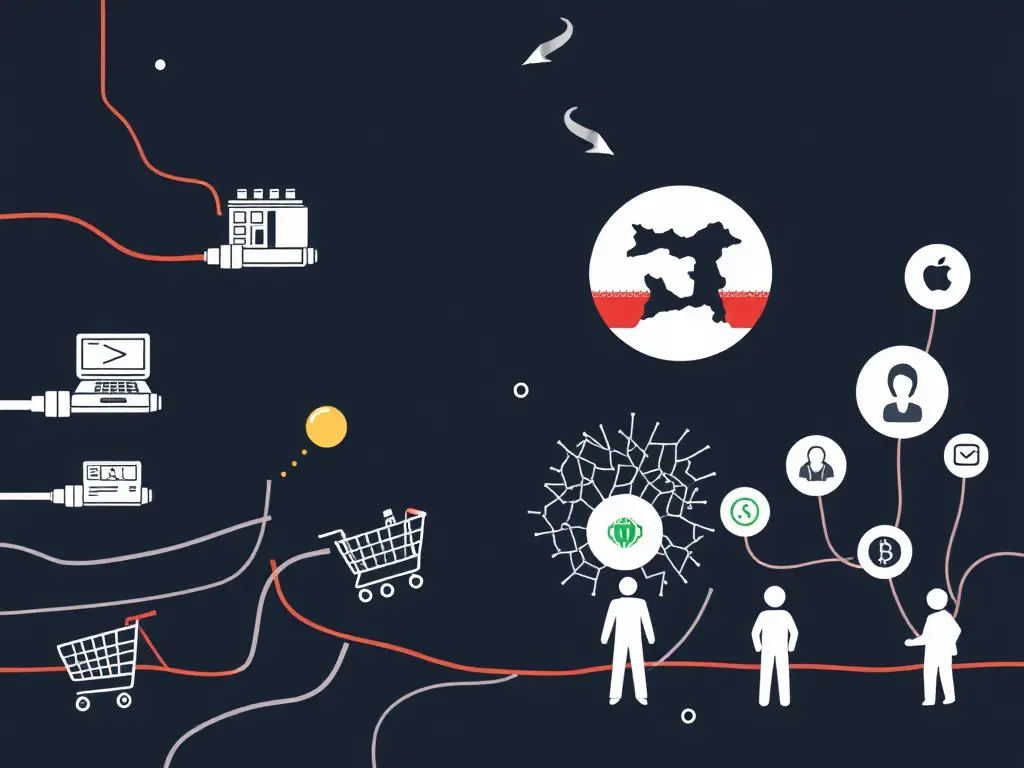In the age of communication, the internet is considered the vital artery of modern societies. Stable and high-quality access to international internet is not just a tool for daily communication, but the backbone of the digital economy, education, research, and social interactions. However, in recent years, Iran has witnessed a wave of disruptions and restrictions in access to the international internet. This phenomenon can no longer be seen merely as a temporary technical issue; rather, it appears to be the result of systematic policies targeting this critical infrastructure. These International Internet Disruptions are currently damaging the country’s economic and social infrastructures and have profound consequences for people’s lives and the future of Iran’s development.
Contrary to official claims of technical problems, analyses and field evidence suggest that internet outages and quality degradation, especially in international connections, have deeper roots. The Telecommunication Infrastructure Company, the entity responsible for providing the country’s international bandwidth, has itself acknowledged issues in some international communication routes. However, what users and businesses experience goes beyond a temporary technical fault. This situation has led to a significant decrease in traffic on international platforms, effectively stifling Iran’s digital economy.
Economic Consequences of International Internet Disruptions
The digital economy is rapidly becoming a crucial part of the global and national economy. Online businesses, startups, freelancers, and even more traditional sectors using digital tools for marketing, sales, and customer communication, are all heavily dependent on stable and high-speed internet. International Internet Disruptions directly hit this vital sector.
One of the most tangible consequences is direct financial loss. According to estimates by the international monitoring body NetBlocks, every hour of complete internet outage in Iran imposes a cost of $1.5 million on the country’s economy. This staggering figure represents only the cost of lost immediate opportunities and does not include accumulated and long-term damages. The erosion of trust among foreign and domestic customers regarding the stability of Iranian online services, the destruction of costly digital marketing campaigns, and the halt in the customer communication cycle vital for business survival and growth, are just some of these hidden costs.
Furthermore, disruptions in accessing international platforms and tools that many Iranian businesses rely on for their daily operations (such as project management tools, collaboration platforms, cloud services, and social media for marketing and sales) effectively halt the gears of these businesses. This not only leads to reduced income and profitability but also results in job losses in the digital sector. Freelancers working with foreign clients or using international platforms to find projects lose opportunities due to unstable access. This blow to the country’s skilled and specialized workforce can, in the long run, lead to brain drain and the depletion of expertise needed for further development.
Social and Cultural Impacts of Internet Disruptions
International Internet Disruptions are not limited to the economic sector; they affect deeper layers of society. The internet has become a key tool for education, access to information, social and cultural interactions, and civic participation. Restrictions on access to the international internet disrupt Iranian users’ access to global scientific, educational, and cultural resources. Students and researchers face difficulties accessing articles, books, and online courses. This can reduce the quality of education and research in the country and isolate the academic community.
Moreover, international communication platforms and social networks play a significant role in social interactions, the formation of online communities, and cultural exchange. Restricting access to these platforms makes it difficult for Iranians to connect with the outside world and even with each other. This isolation can lead to a decrease in social capital, weakening of family and friend connections abroad, and reduced social awareness. The ability to express opinions freely, organize civil activities, and access diverse news and information is also weakened by these restrictions.
The psychological effects of internet disruptions are also considerable. Increasing reliance on the internet for work, study, communication, and entertainment has led to stress, anxiety, and frustration among users when outages and quality degradation occur. Businesses suffering losses with each outage endure significant psychological pressure. Students unable to submit projects on time or attend online classes face difficulties. These pressures can ultimately affect the mental health of society.
Root Cause Analysis: Technical or Policy-Driven?
While officials sometimes blame disruptions on technical problems, fiber optic cuts, or security concerns, many experts and users disagree. They believe that a significant part of these issues comes from poor policymaking and restrictive governmental approaches.
The internet has shifted from a “tool for development” to a constant “security suspect.” This shift seems to be the main reason behind instability and access restrictions. Instead of fixing technical issues, this mindset fuels more filtering and limitations.
Conflicting statements by officials about the internet situation have added confusion and distrust. The Minister of Communications sometimes claims improvements. However, reports from groups like NetBlocks and user experiences show otherwise.
This clear gap between official narratives and reality weakens public trust. It also raises concerns about the future of internet freedom in the country.
Solutions and Looking Ahead
Continued International Internet Disruptions can inflict irreversible damage on Iran’s economy and society. To prevent this catastrophe, a serious review of policies and approaches towards the internet is necessary. Transforming the internet from a ‘suspect’ into an ‘opportunity’ is the first and most important step.
Investing in communication infrastructure is essential to increase stability and bandwidth. It is also important to diversify international routes to avoid relying on just one or a few paths. Transparency about the real causes of disruptions, along with stable technical solutions, is another key technical step.
However, policy change matters even more. Reducing unnecessary restrictions and accepting the internet as a vital tool for development can improve the current situation. The internet drives growth across economic, social, scientific, and cultural sectors. Embracing this fact is the first step toward progress.
Creating an open, predictable environment for digital businesses and users is crucial. Guaranteeing free access to necessary tools and information helps build trust. Working with the technical community and users to identify and fix problems also plays a major role.
Without stable, high-quality access to the global internet, building a knowledge-based economy is nearly impossible. A vibrant, connected society depends on it. Today, the digital economy is struggling to breathe. Its recovery calls for serious decisions and immediate action.
Conclusion: A Future Tied to Connection
Ultimately, the consequences of International Internet Disruptions go beyond users’ daily frustrations. This phenomenon is destroying the country’s economic and social infrastructure at a deep and long-term level. Loss of economic opportunities, harm to startups, reduced productivity, and limited access to information are just a few of the consequences. Cultural and social isolation also increases. The government and responsible bodies must recognize the internet’s strategic importance. They need to shift their approach from security-focused to development-driven. By investing wisely and enacting proper policies, they can ensure stable, high-quality internet access for all citizens and businesses. Iran’s economic and social future is largely tied to how this vital artery is managed and developed.
Sources :
- “Divar” besieged by internet restrictions: An analysis of the consequences of outages and instability – Zoomit
- The Breath of the Digital Economy is Struggling – Donya-e-Eqtesad
- NetBlocks: Severe disruption in Iran’s internet – Khabaronline
- Serious conflict between claims of internet returning to normal and what we see – Digiato
- Ministry of Communications statement on international internet disconnection; temporary restriction – Zoomit






